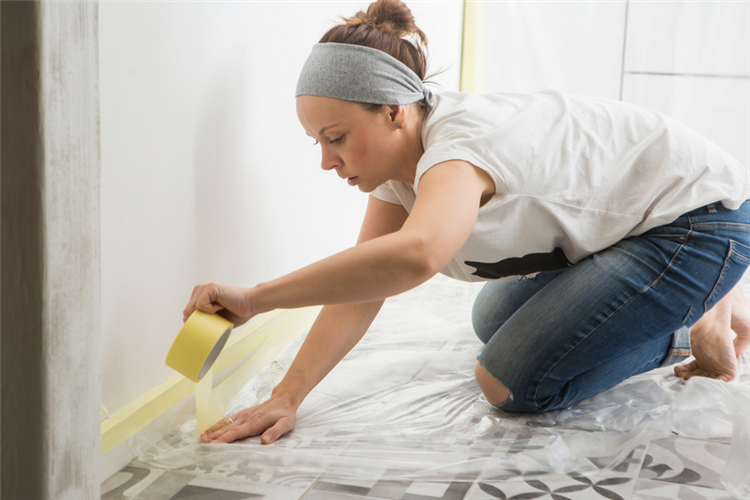
What you'll find in this article:
As a military landlord, you know about a military tenant’s PCS housing search struggle—you’ve probably been there yourself a time or two. That experience is good to have as a reference, as it connects you to your tenants and reminds you of what they need and what they would love to have.
Compared to the renter lifestyle, landlord life has different challenges, starting with getting your home ready for new tenants. There’s no doubt you’re busy running your real estate investment business, so the best way to prepare is with a thorough guide to show you the way.
If you need a kickstart to prep for your tenants, use this seven-point checklist to prepare your home.
1) Tenant Screening: Credit and Background Check
Whether you rent to a military or civilian tenant, the most important baseline of preparedness comes from thorough tenant screening. There are various online options for screening prospective tenants for credit and background checks, but RentRisk is one of the easiest and most secure programs available.
RentRisk eliminates landlords' uneasy feelings when requesting personal information from tenants. With RentRisk, the data is securely submitted, and you can review it later through a private online account.
Here’s more helpful information: Tenant Screening Tips for Landlords
2) Create Your Lease with U.S. Legal Forms
Once you’ve screened the perfect tenant, it is time to find a legally binding document. MilitaryByOwner partners with U.S. Legal Forms to make downloading state-specific legal forms as easy as a click. U.S. Legal Forms offers legally reviewed home selling and lease packages to ensure that each document complies with the laws of your state.
In the lease, you should clearly state the conditions of occupancy, such as how and when you can visit the property, guidelines for making modifications to the property, and expectations for the care of the home and landscaping. Don't be afraid to get specific. For example, if you want the gutters cleaned twice a year, make a note in the lease.
3) Discuss the SCRA and a Military Clause
Discuss with your tenants if they’ll need to write in a military clause in addition to their protections guaranteed by the Servicemembers Civil Relief Act (SCRA). Your tenants could be on a waiting list for military housing or may see a regional move in their future.
If you’re unfamiliar with the SCRA, read over Everything Renters and Landlords Should Know About the SCRA and the Military Clause
4) Make Necessary Repairs and Nice-to-Have Fixes
The likelihood is that if it annoys you, it will bother your tenant, too. It’s easy to become complacent about the items that are inoperable or damaged around your home, but it is unreasonable to expect that your tenant will come to feel the same way about those issues.
You may need to:
- Fix walls and repaint
- Remove or clean carpet
- Replace broken appliances
- Improve outdoor areas like the deck or patio
If you expect your tenants to take care of your home, you need to lead by example. Take a tour of your home, room by room, and jot down the items that need repair or replacement and make sure that you check every item off that list before handing the keys over to the new tenants.
What Are the Maintenance Responsibilities for Both Tenants and Landlords? helps you communicate your expectations with your tenants.
5) Take Photos and Videos of Your Home
Once you’ve cleaned the house thoroughly and repaired it, take extensive videos and photos of your rental home, including walls, carpets, sinks, tile, showers, toilets, closets, doors, pool, landscaping, and kitchen appliances. These provide documentation of the house’s condition before the tenants take ownership.
If you’re unable to visit the property yourself, employ a friend, neighbor, or local real estate professional to take the photos for you. These pictures may prove to be useful should a dispute arise.
6) Document the Move-In and Move-Out Walkthrough
You probably already understand the importance of a final walkthrough on a home purchase, but a walkthrough on a rental home is equally important. If you’re unable to meet your tenants in person for a walkthrough, send a copy of the checklist which you filled out after preparing the home. Then, ask your tenants to fill out the same form once they move into the house.
If there are any discrepancies between your housing checklist and the tenant’s, you can address these immediately to avoid any future conflict. Keep a copy of the signed and dated list with your other legal documents. Then, you’ll have easy access later when the tenant moves out of the house.
7) Gather the Owners' Manuals
A collection of owner’s manuals is a smart idea for any homeowner, but the ability to provide your tenant with a well-organized binder of owner’s manuals, extended warranties, and even paint samples is invaluable.
A simple three-ringed binder filled with plastic sleeves makes the organization and safekeeping simple. Include the binder on the list of items provided to the tenant on the Move-In and Move-Out checklist with a reminder that it remains with the home.
The landlord/tenant relationship is essential to both parties. As a landlord, it’s critical to take care of your property and your tenants. Sometimes, it’s easy to let some items slide when the PCS crunch time arrives. Give yourself as much time as possible to properly prepare for your new tenants. Preparing your home for new tenants may be time-consuming, but the time you spend now will pay dividends later when you reap the benefits of your investment.
back to top

